A garden can change the way a home feels. It brings life, calm, and color into the space. It adds more than just plants. It builds a place where people can sit, rest, and enjoy nature. You do not need a large yard or expensive tools. You can begin with simple steps. A few plants and a little time can turn any space into something special.
Some people think gardens need too much care. Others fear they will not succeed. This belief stops many from starting. The truth is simple. Anyone can grow a healthy garden. All it takes is patience and care. The key is to begin with small goals. Start with plants that match your local weather. Add good soil, water them well, and watch them grow.
Your yard, balcony, or front porch can hold beauty. You do not need fancy flowers or rare plants. Common plants grow well too. Choose the ones that feel right to you. Each garden is personal. It should fit your space, your needs, and your time. Homenumental believes in that approach.
This guide gives clear advice to help you grow your own outdoor area. Whether you want herbs, flowers, or simple greenery, this article shows the way. Step by step, you will learn how to build a garden that adds beauty and peace to your home.
How to Plan a Garden That Fits Your Space
Every garden needs a plan. A clear plan helps you work with ease. Start with a simple goal. You may want a place to grow herbs. You may want color near the front door. Some people want a quiet space with shade. Think about what feels right for you.
Look at your space. Check where the sun stays longest. Notice spots with wind or too much shade. Dry corners may need more water. Wet areas may need raised soil. Write these things down. You will use them when you place your plants.
Draw a rough map. Mark the space with chalk or string. Leave room to walk. Put tall plants at the back. Place short ones in front. Use pots, boxes, or old containers if needed. Your garden does not need to be perfect. It only needs to make sense and feel easy to care for.
What to Know Before You Buy Plants
Good plants start with good choices. Before you buy, take time to look at your space. Think about sunlight, soil, and weather. Some plants love heat. Others grow better in shade. Match each plant to the place that fits it best. This small step saves time and money later.
Look at the plants in the shop. Check the leaves and roots. Healthy leaves look bright and full. Soft or brown roots can mean trouble. Pick plants that look strong and fresh. Avoid ones with holes or spots. Weak plants may not survive once moved.
Ask simple questions before you buy. How much water does it need? How tall will it grow? Does it need full sun or part shade? A few answers help you plan better. The right plants grow faster and stay healthy longer.
Start small. A few plants are easier to manage than many. You can add more later when you feel ready. A good start builds skill and confidence. Each plant you choose becomes part of your home story.
How to Start a Garden with a Low Budget
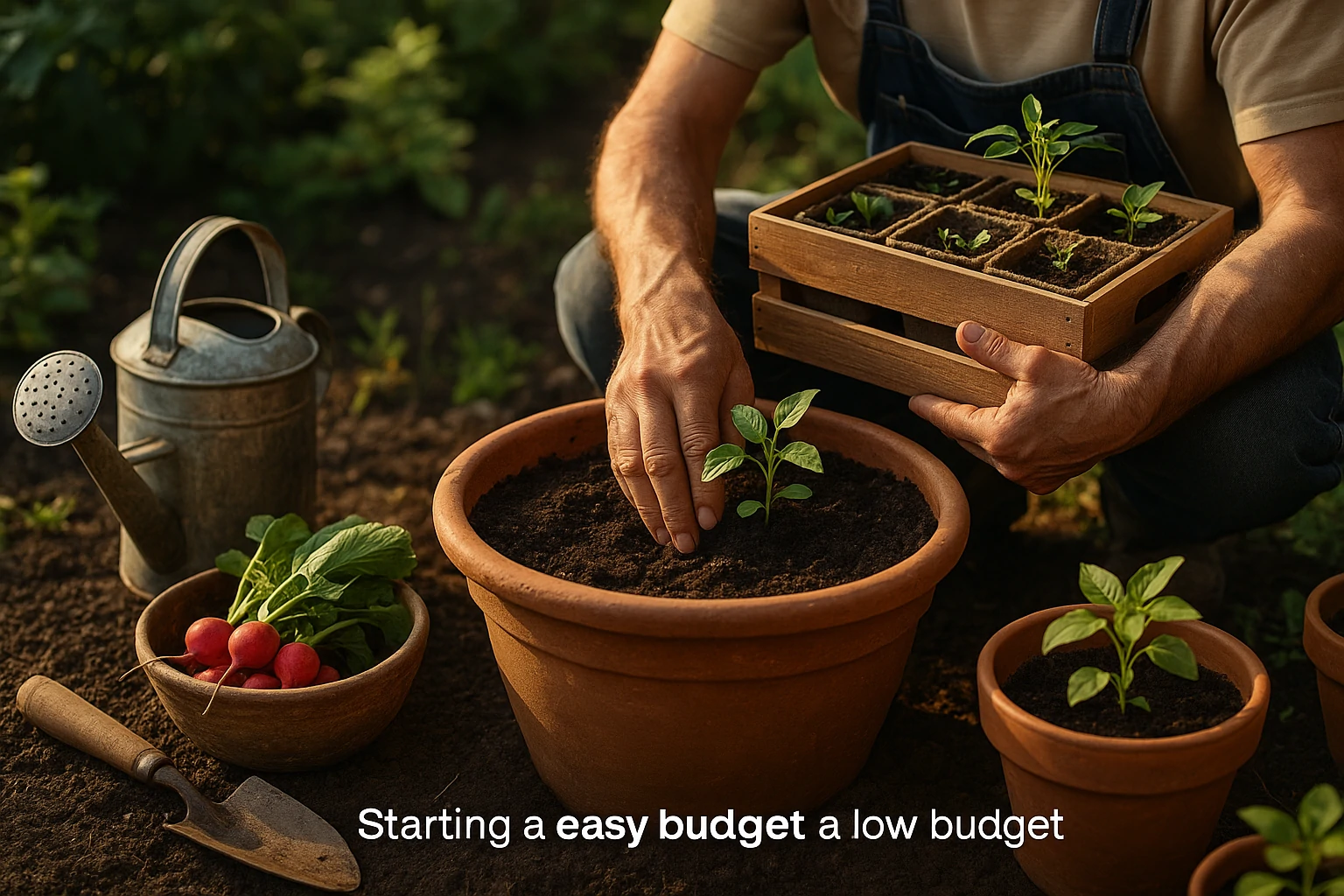
You do not need much money to start a garden. Many tools and items already sit in your home. Old buckets, wooden crates, and plastic bottles can all hold soil. Use what you have before you spend.
Start with seeds. They cost less than grown plants. Some seeds come from your kitchen. Dry beans, garlic, and tomatoes can grow again. Ask friends or neighbors if they have extra seeds. Many gardeners share what they no longer need.
Make your own compost. Use food waste like fruit peels and dry leaves. Let them break down in a box or corner of your yard. After some time, this mix turns into rich soil.
Water with care. A slow trickle from a reused bottle or a tin can does the job. You do not need to buy special tools. The goal is to grow, not to spend. A smart plan and a few strong plants can give you a rich garden without high cost.
Best Tools for a New Gardener
You do not need many tools to begin. A few basic ones can help you dig, clean, and care for your plants. These tools save time and make the work feel simple. Most of them are easy to find and not costly.
Start with these garden tools:
- Hand shovel: Dig small holes and move soil. A strong grip and a solid handle make it easy to use.
- Hand fork: Break hard soil and loosen the ground. It also helps pull out weeds without harming roots.
- Small rake: Smooth the soil and clear dry leaves. A light rake keeps your garden neat.
- Garden scissors or pruners: Cut dead stems and shape plants. Sharp blades protect plant health by making clean cuts.
- Work gloves: Shield your hands from dirt, bugs, and sharp stems. Choose gloves that fit well and feel soft.
These tools help with every task in the garden. You can start with just a few and add more over time. Simple tools in skilled hands can make a big change. Focus on care, not cost. A neat, growing garden will follow.
How to Use Kitchen Waste to Feed Your Garden
You can feed your garden without spending money. The waste from your kitchen works well in soil. It helps plants grow strong. Instead of throwing scraps away, save them. You can turn old food into rich compost. This keeps the ground healthy and full of life.
Use simple items like fruit peels, dry leaves, and tea leaves. These break down fast and add good things to the soil. Coffee grounds also help. Eggshells add strength to plant roots. Mix wet and dry waste to keep it balanced. A small box or bin in a corner of your yard is enough.
Do not add meat, milk, or oil. These bring bad smells and attract pests. Keep the pile simple and clean. Turn it with a stick every few days. This brings air into the mix and helps it break down faster.
After a few weeks, you will see soft, dark compost. Use it in your soil before planting. Your plants will grow better with this natural food. It costs nothing and saves waste from going to the bin.
How to Build a Small Garden in a City Home
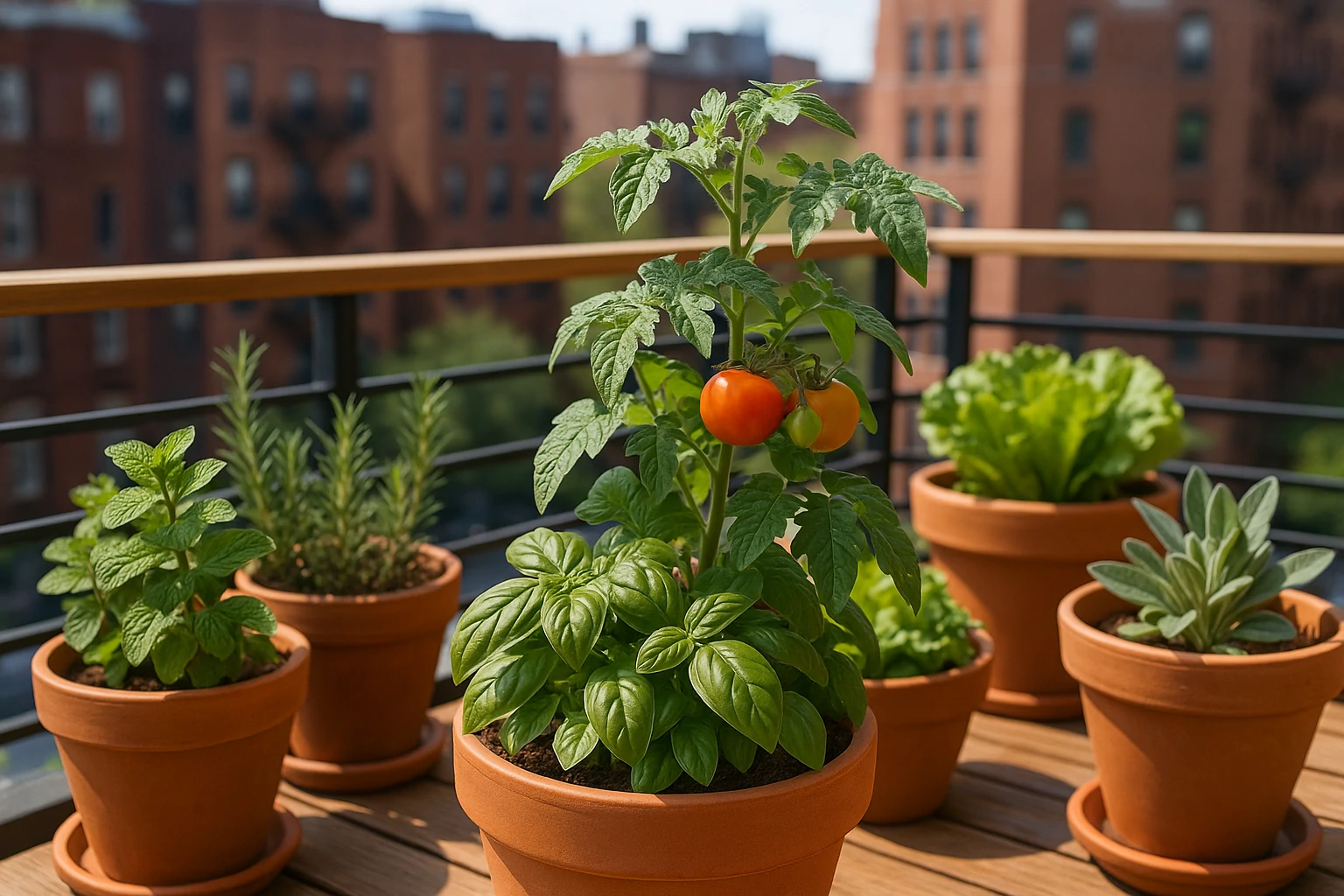
City homes often have little space, but you can still grow plants. A balcony, a rooftop, or even a sunny window can hold a garden. You only need a few strong containers, good soil, and the right plants.
Use old buckets, clay pots, or wooden boxes. Make sure they have holes at the bottom. This lets water flow out and keeps roots safe. Place the containers where they get the most sun during the day. Most plants need at least six hours of light.
Pick plants that stay small and grow well in pots. Herbs like mint, basil, and thyme grow fast. You can also grow tomatoes, lettuce, or small flowers. Choose what fits your space and weather.
Water your plants often but not too much. In a small space, the soil dries fast. Check it each day with your hand. If the top feels dry, add water. Keep the area neat so it feels like part of your home. A small garden can bring peace and joy to any city life.
When and How to Water Plants the Right Way
Water helps plants stay strong. Too much or too little can harm them. The best way to know when to water is to check the soil. Press your finger into the dirt. If the top part feels dry, your plant needs water. If it still feels damp, wait another day.
Always pour water near the roots. Do not splash the leaves. Wet leaves can bring disease or mold. Use a slow pour. Let the water soak deep into the ground. This helps roots grow down instead of staying near the top.
Morning is the best time to water. The soil has time to dry before night. Wet ground at night can invite pests. Try to set a simple schedule. Watch your plants each day. Some need more water than others. With care, your garden will stay healthy and full of life.
What to Do Each Month in Your Garden
A garden needs care all year. Each month brings new tasks. Small steps help plants stay strong in every season. A simple plan keeps you on track.
In early spring, clean the soil. Remove weeds and add compost. Plant seeds that grow in cool air. Water when the ground feels dry. In late spring, check for bugs. Trim weak branches and help tall plants stand straight.
Summer needs extra care. The sun dries the soil fast. Water in the morning and check for signs of heat stress. Add mulch to keep the ground cool. Pick fruits or flowers as they bloom. This helps the plant stay active.
In fall, clean up again. Remove dead plants and gather dry leaves. Plant bulbs if your weather stays mild. Let the soil rest in winter. Cover it with mulch to protect it from cold. Each month gives your garden a chance to grow better. A simple plan makes it easier to enjoy the process.
| Season | Key Tasks |
|---|---|
| Spring | Clean soil, plant seeds, add compost |
| Summer | Water early, add mulch, trim plants |
| Fall | Cut dead plants, save seeds, clean beds |
| Winter | Let soil rest, mulch open areas |
Easy Herbs to Grow at Home
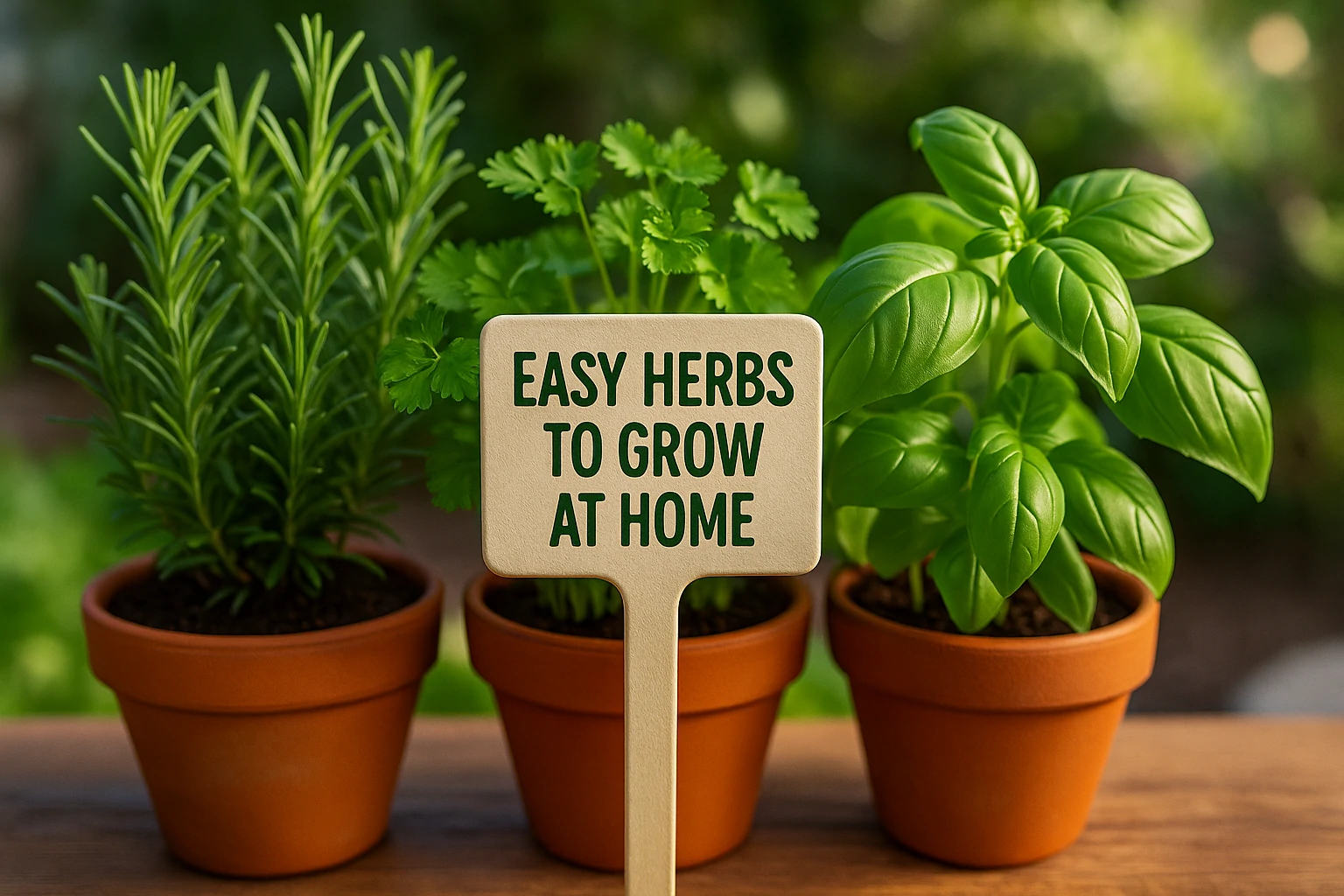
Herbs grow well in small spaces. They need little care and give fresh flavor to meals. Most herbs grow fast and stay strong in pots or small garden beds. You can keep them near the kitchen or on a sunny window ledge.
Start with herbs that grow in your climate. Mint, basil, and parsley grow in most places. Rosemary and thyme also do well in dry soil. These herbs need six hours of sunlight each day. Water them when the top soil feels dry.
Use pots with holes at the bottom. This stops roots from staying wet. Add compost to the soil once a month. Cut the leaves often to keep the plant full and fresh. Herbs do not like crowded space. Give each plant enough room to grow.
Growing herbs at home saves money and adds taste to your food. You can pick them fresh and use them right away. A few pots of herbs can make your home feel full of life.
How to Keep Soil Healthy Over Time
Good soil helps plants grow strong. Over time, soil can lose nutrients. You need to refresh it to keep your garden healthy. A few simple steps can protect the soil and help plants stay full of life.
Add compost often. Use food scraps, dry leaves, or old plant parts. Mix it into the top layer of soil every few weeks. This adds fresh nutrients and keeps the ground soft.
Avoid walking on the soil. Heavy steps can press it down and block the air. Use paths or stones to move around your garden. This keeps the soil loose and easy for roots to grow.
Change plant spots each season. Do not plant the same crop in the same place every year. This helps stop pests and keeps the soil from wearing out. With small care, your soil can stay rich and ready for years to come.
Common Gardening Problems and Simple Fixes
Every garden faces problems. Some plants grow slow. Others turn yellow or stop blooming. These issues are normal. You can fix most of them with simple steps.
If leaves turn yellow, check the soil. Too much water or poor drainage can cause this. Let the soil dry before watering again. If the plant still struggles, add compost or a small amount of natural fertilizer. That can bring the color back.
If pests show up, look under the leaves. You may see holes, black spots, or small bugs. Use water with mild soap and spray the leaves. Keep the garden clean and remove weak plants. A strong, clean garden fights pests on its own. Watch your plants each day. Early care prevents bigger problems.
Signs Your Plant Needs Help
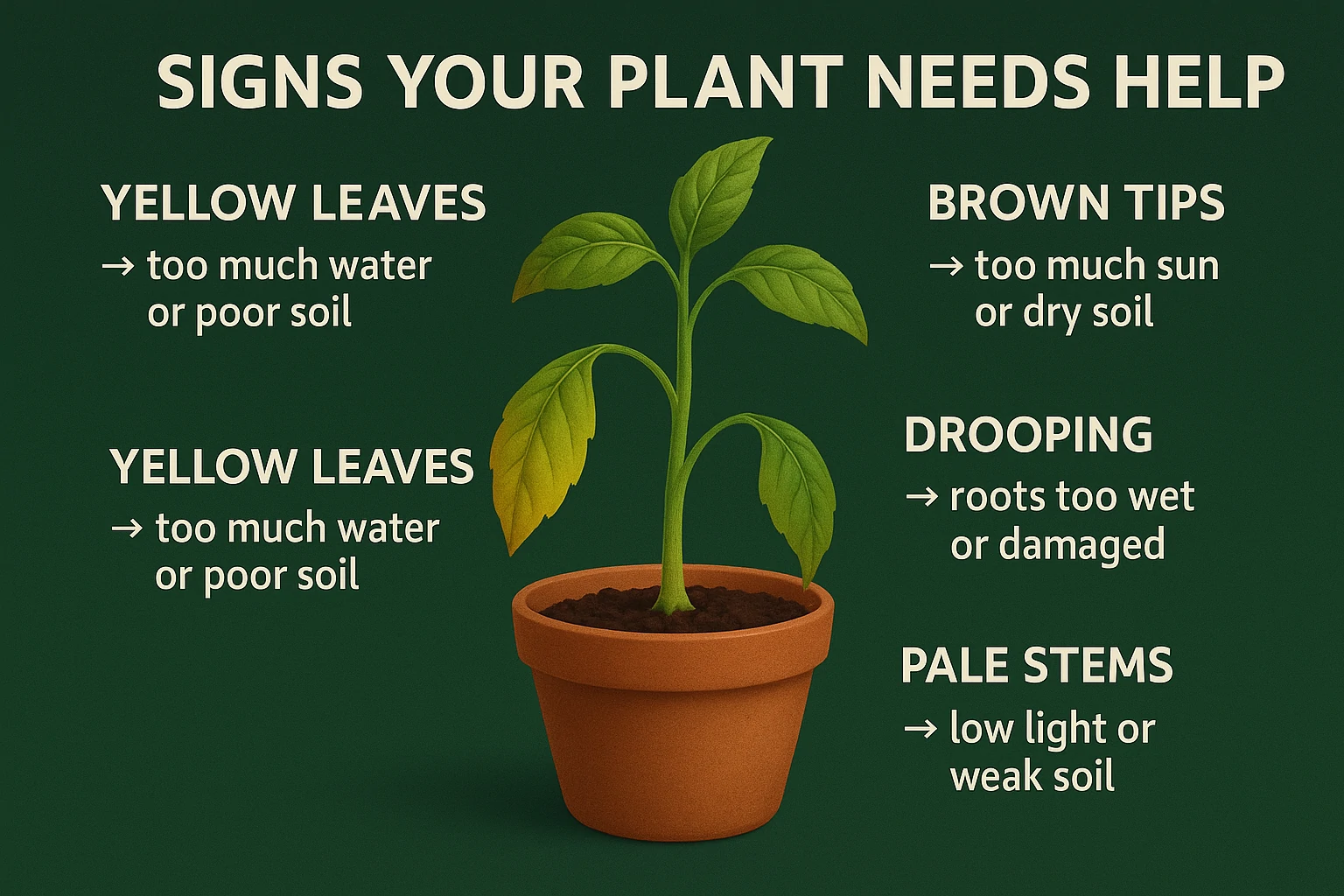
Plants show signs when they feel weak. The leaves tell most of the story. When the color fades or spots appear, the plant may lack food or light. Dry, brown edges often mean too much sun or not enough water. Soft or drooping leaves can mean the soil stays too wet.
Check your plants often. Touch the soil to feel if it is dry or wet. Smell it too. A bad odor can mean the roots have rotted. Healthy soil smells fresh and earthy. Look at the stems and new growth. If they stay thin or pale, your plant needs better care.
Give weak plants time to recover. Move them to a place with more or less sunlight, depending on the problem. Add compost to refresh the soil. Remove dead leaves so new ones can grow. Small changes can save most plants. Patience and care make a big difference.
Consider light bullets to highlight clear symptoms and fixes:
- Yellow leaves → too much water or poor soil
- Brown tips → too much sun or dry soil
- Drooping → roots too wet or damaged
- Pale stems → low light or weak soil
How to Keep Your Garden Safe from Pets or Kids
A garden should be safe for everyone at home. Pets and children love to play near plants, but they can harm them by accident. You can keep your garden safe with a few simple steps.
Use small fences or borders around soft plants. This stops pets from walking through or digging the soil. You can use wood, wire, or stones. Choose materials that look natural and match your space.
Place taller plants near walls or corners. Keep sharp tools and fertilizers out of reach. Always store them in a dry, closed place. Avoid plants that have thorns or strong smells, as they may cause skin trouble or allergies.
Teach children to care for plants. Show them how to water gently and touch the leaves with care. This builds respect and keeps your garden safe. A protected garden stays neat, healthy, and fun for everyone.
What Makes a Garden Look Peaceful and Clean
A peaceful garden feels calm the moment you step in. Clean paths, soft colors, and healthy plants make it inviting. You do not need many things. A few simple touches can change how your garden looks and feels.
Start with order. Keep plants trimmed and the ground free of dry leaves. Place stones or tiles to form small paths. This helps you walk without stepping on the soil. Clean space gives the mind rest and the eyes focus.
Add color with care. Too many bright shades can look messy. Mix green leaves with a few soft colors. White, yellow, or light pink flowers bring peace. Place taller plants behind smaller ones to make smooth layers. This makes your garden look full but not crowded.
Use natural items to decorate. A wooden bench, a clay pot, or a small light can make the space warm. Avoid clutter. Each object should have a reason to stay. A neat garden brings quiet joy and helps you feel calm every time you see it.
See these easy fall decor tips. They help your home feel warm and fresh.
How to Plan Garden Maintenance Through the Year
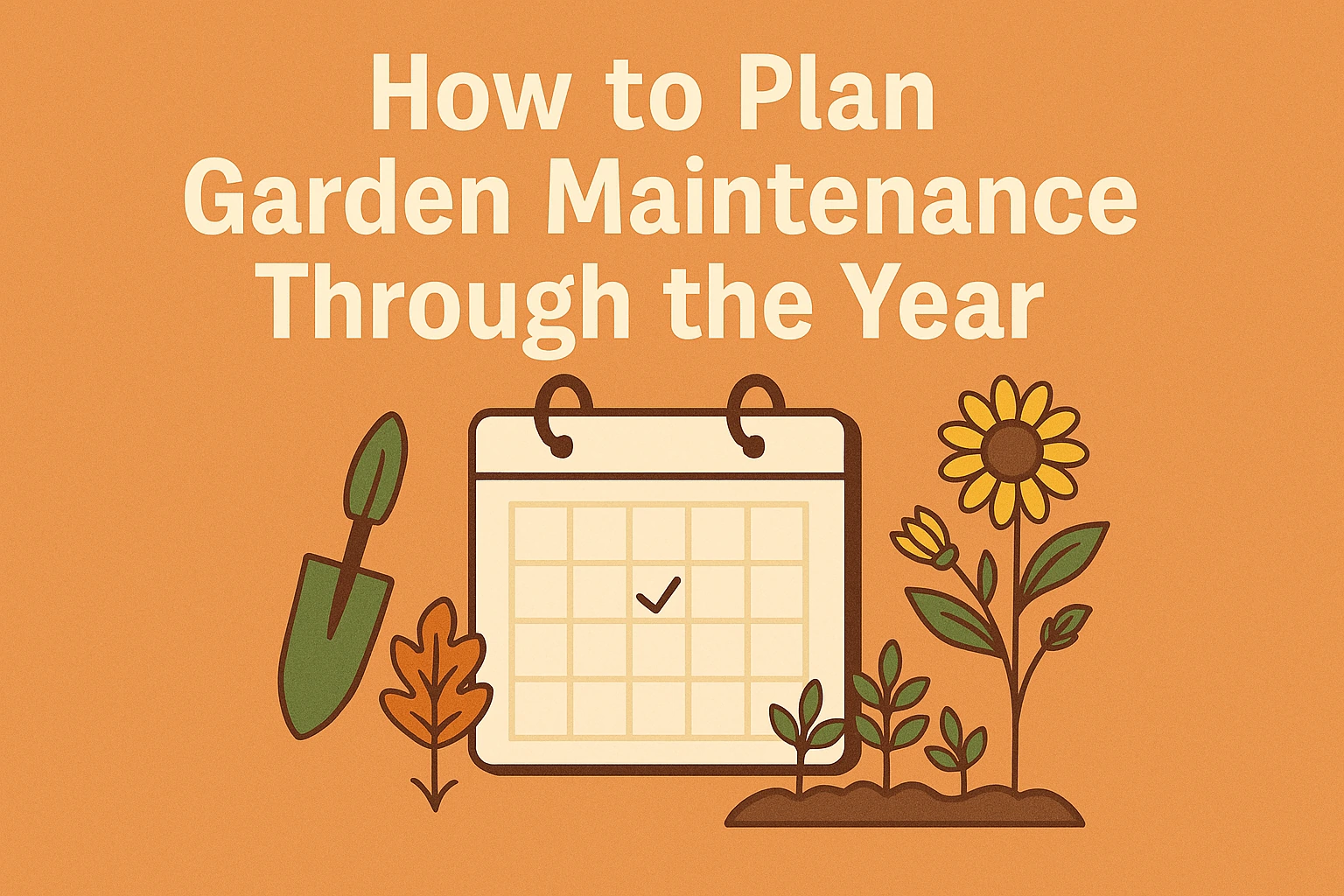
A garden needs care in every season. Regular work keeps it clean and full of life. With a simple plan, you can save time and avoid stress. A small effort each week makes a big difference over the year.
In spring, focus on new growth. Add compost, plant seeds, and check for weeds. Make sure the soil stays soft. Remove dry leaves and let sunlight reach all plants. This sets a strong base for the year.
In summer, protect the garden from heat. Water early in the morning. Add mulch to keep soil cool. Trim long stems and clear fallen leaves. Watch for pests, as warm weather brings more insects.
In fall, clean the beds again. Cut dead parts and save healthy seeds. Add dry leaves to the compost pile. Water less as the air cools. In winter, let the soil rest. Cover open spots with mulch to guard against cold. When you follow this simple plan, your garden stays fresh all year.
How to Attract Birds and Butterflies to Your Garden
Birds and butterflies bring life to a garden. Their colors and sounds make the space feel alive. You can invite them easily with the right plants and a few kind touches. A living garden is a healthy one.
Grow plants that give nectar and seeds. Flowers like marigold, zinnia, and jasmine attract butterflies. Birds love plants with small fruits or berries. Add sunflowers or millet if you have space. These give food and color at the same time.
Keep a bowl of water in a quiet corner. Birds will come to drink or take a quick bath. Change the water often to keep it clean. Avoid strong chemicals or sprays. These can harm the insects and the birds that visit.
Add small stones, twigs, and green corners where butterflies can rest. Let a few wild plants grow at the edge of your garden. Nature needs balance. When birds and butterflies arrive, you will know your garden is truly alive.
How to Make Gardening a Daily Habit
A good garden grows with daily care. Small steps each day help plants stay strong. You do not need to spend hours outside. Even ten minutes can make a clear difference. A few minutes of care today saves big work later.
Start with a set time. Early morning or evening works best. Walk through your garden. Look at each plant. Touch the soil to check if it feels dry. Remove weeds or dry leaves. Water where needed. This small routine keeps your garden clean and fresh.
Keep your tools in one place. When tools are easy to reach, you will work more often. Try to enjoy the quiet. The smell of soil and the sound of leaves can calm the mind. It helps you relax after a busy day.
Make the habit simple and steady. Do not aim for perfection. The goal is to stay close to your plants and learn what they need. A few minutes each day keeps your garden alive and your mind at peace.
How to Create a Garden Design That Matches Your Home
A garden should feel like part of your home. The design must blend with your space, not fight it. Each home has its own look and mood. Your garden can match that style with a few smart choices.
Look at your house first. Notice the colors and shapes. A modern home looks good with clean lines and neat rows. A classic house fits well with soft edges and natural curves. Choose plants that add balance to what you already have.
Keep the same tone in your paths, pots, and fences. Use wood, clay, or stone that matches your walls or floor. A garden feels peaceful when everything connects. Avoid too many colors or patterns. Simple design gives calm to the eyes.
Add small touches that reflect your taste. A seat near a window, a clay pot by the door, or soft lights under a tree can change the whole view. The right design makes your garden a natural part of your home, not just a space outside it.
How to Choose the Right Plants for Every Season
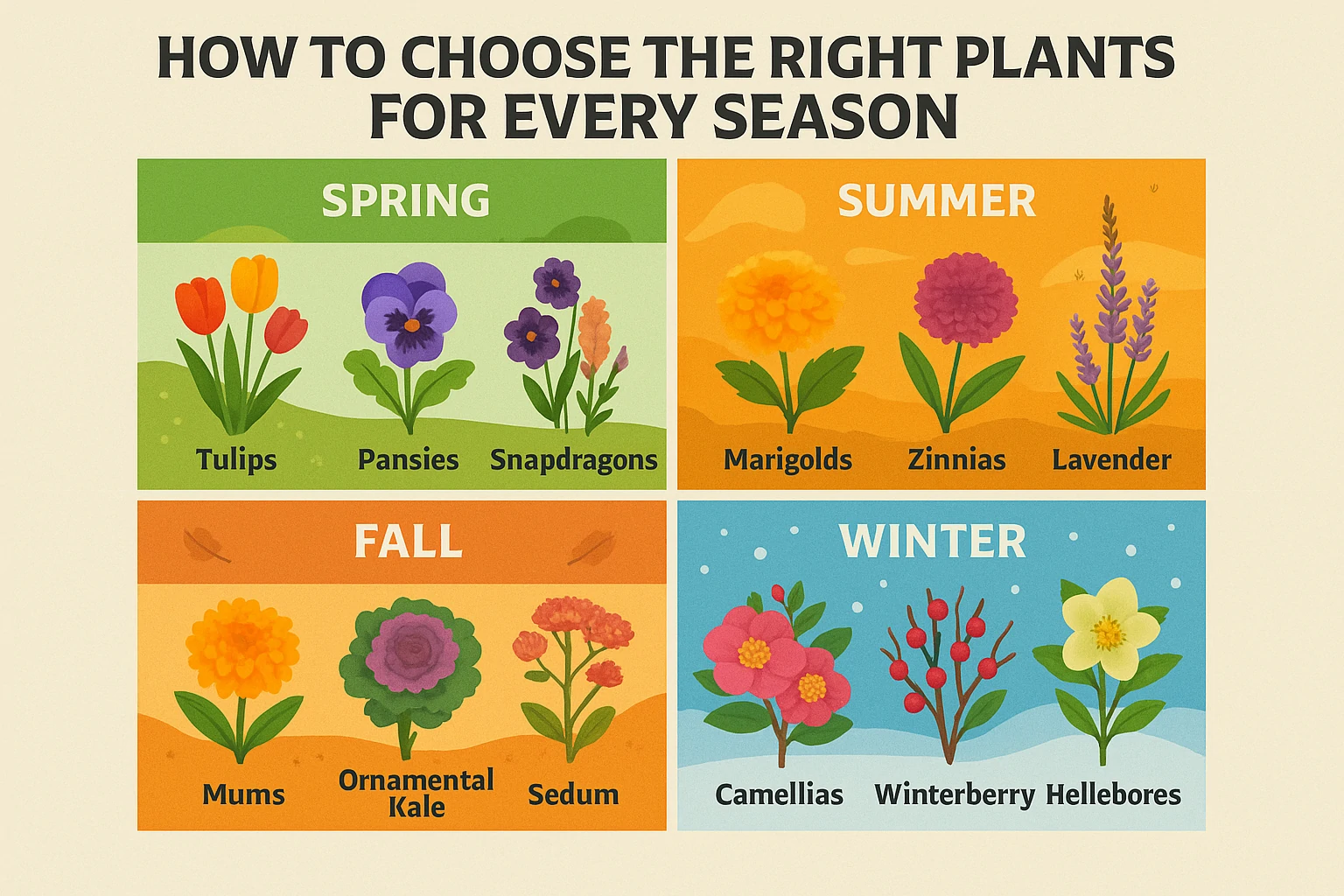
Every season brings a new chance to grow. Plants do not all grow at the same time. Some love cool air. Others need warm sun. To keep your garden full, choose the right plants for each part of the year.
In spring, pick plants that grow fast in soft soil. Try leafy greens, early flowers, or herbs. These enjoy fresh air and cool ground. In summer, choose plants that handle heat. Tomatoes, peppers, and bright flowers do well in full sun.
Fall is a good time to plant bulbs and strong roots. These grow slow and rest in winter. Use this time to plant garlic, onions, or flowers that bloom next year. In winter, let most plants rest. You can still grow strong greens like kale or use pots inside the home.
Each season has its own rhythm. Know your weather and light. Match your plants to the time. This helps them grow with less stress. Your garden will stay active all year.
How to Involve Family and Kids in Gardening
Gardening becomes more fun when the whole family helps. Children enjoy working with plants. They feel proud when they see things grow. Small tasks can teach them care, patience, and love for nature.
Give kids a small spot of their own. Let them plant easy things like beans, sunflowers, or mint. These grow fast and show quick results. Show them how to dig, plant, and water with care. Use safe tools and stay close as they learn.
Let each person in the family take a role. One can water. Another can remove weeds. Someone else can collect dry leaves. These simple jobs build a habit and keep the garden in good shape.
Talk about what grows and what changes. Let children ask questions. Share the joy when new leaves or flowers appear. A family garden brings people together and builds memories that last.
How a Garden Improves Mental Health and Well-Being
A garden gives more than food or flowers. It gives peace to the mind. Time spent with plants helps you feel calm. Even ten quiet minutes outside can ease stress after a busy day.
Working with soil clears your thoughts. Touching leaves, smelling herbs, and hearing birds bring you closer to nature. These small moments help you slow down and breathe easy. The garden does not judge. It grows with you, step by step.
Watching plants change builds hope. A dry plant that blooms again shows you that growth takes time. This teaches patience and care. It also helps you focus on simple things that matter most.
Many people feel better when they care for plants. A garden gives purpose. It lifts your mood. It gives you something to look after. In return, it gives you peace, beauty, and a deeper joy that stays with you.
Pick the Right Place to Plant
A strong garden starts with the right place. Look for a spot that gets direct sunlight. Most plants need six or more hours of sun each day. Walk through your yard at different times. See where the light stays longest. Choose a spot with steady light and soft wind.
Soil is just as important. Reach down and touch the ground. If it feels like dust, it dries too fast. If it stays wet and heavy, roots can rot. You want soil that stays damp but drains well. Mix in compost or natural waste like dry leaves. This helps feed the roots and holds the right level of moisture.
Place the garden where you can reach it often. You will need to water, check for bugs, and pull weeds. If the spot is far from your house or water hose, it may be hard to care for it. Choose ease. A nearby garden gets more love and grows better.
Choose Plants That Fit Your Climate
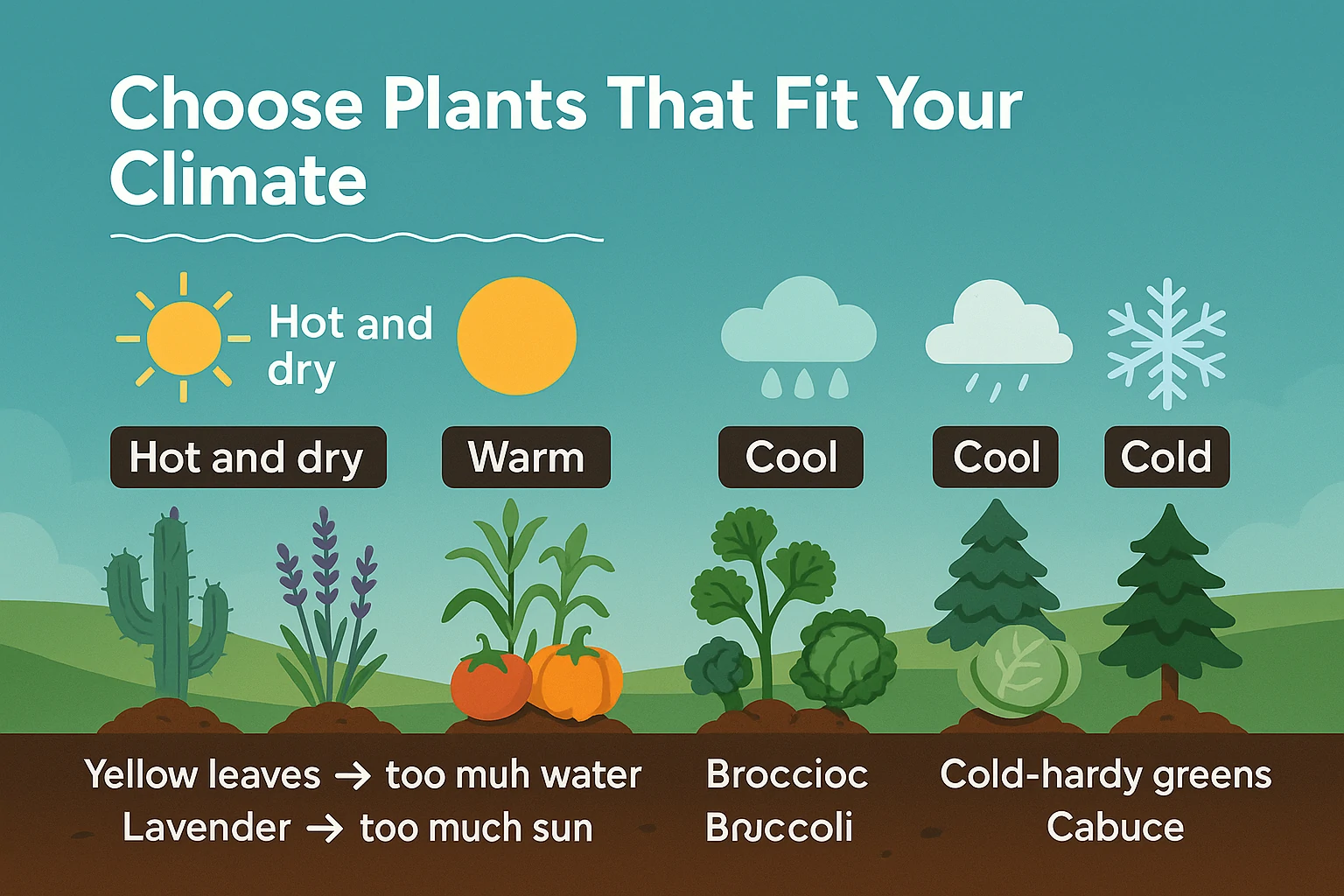
Not every plant works in every place. Find out what grows well in your area. Local plants often need less care. They stand strong in your weather. Ask your garden shop or local expert what plants suit your zone.
Think about what you want. Some people want flowers that bloom with bright color. Others want green leaves or food like tomatoes and carrots. Start with a clear plan. Match your space with the right type of plant. Small spots do better with herbs or short flowers. Larger yards can hold trees and wide plants.
Use a mix of tall and short plants. This gives shape to your garden. Keep taller plants at the back. Put short ones near the front. You can grow mint, rosemary, or lavender in small pots. You can grow sunflowers or small fruit trees in larger spaces. A good mix adds balance.
Prepare the Soil the Right Way
Great plants need healthy soil. Begin by cleaning the area. Remove stones, weeds, and trash. Use a shovel to break the ground. Go deep. Turn the soil about one foot down. Loose soil lets roots breathe and stretch.
Add compost before you plant. You can buy it or make it at home. Use food scraps, dry leaves, and grass cuttings. Let them break down for a few weeks. This makes a rich mix that feeds your plants.
Never skip this part. Many new gardeners forget the soil. But roots live in the ground. They need food, air, and water. Healthy soil gives them all three. If you take time here, your plants will grow faster and stronger.
Plant with Care and Space
Plants need space to grow. Read the labels on your seeds or starter plants. Follow the space rules. Crowded plants fight for light, water, and food. Give each one room to stretch.
Dig a hole just deep enough for the roots. Place the plant in. Cover it with soil. Press it down gently. Do not push too hard. Roots like soft soil. Water the spot after you plant. This helps settle the soil and supports the roots.
Plant in the cool part of the day. Morning or late afternoon is best. Hot sun can stress new plants. In cooler hours, they adjust better and stay strong.
Water Wisely, Not Too Much
Water helps plants grow, but too much can hurt. Check the soil before you water. Push your finger into the ground. If the top part feels dry, it is time to water. If it still feels moist, wait.
Water the base of the plant, not the leaves. Wet leaves can lead to disease. Use a slow stream. Let the water soak deep into the soil. Deep roots grow better than shallow ones.
Early morning is the best time to water. It gives the soil time to dry before dark. Avoid watering at night. Wet soil at night can cause mold and invite bugs. Let rain help when it comes. Save water when nature gives it for free.
Keep the Weeds Away
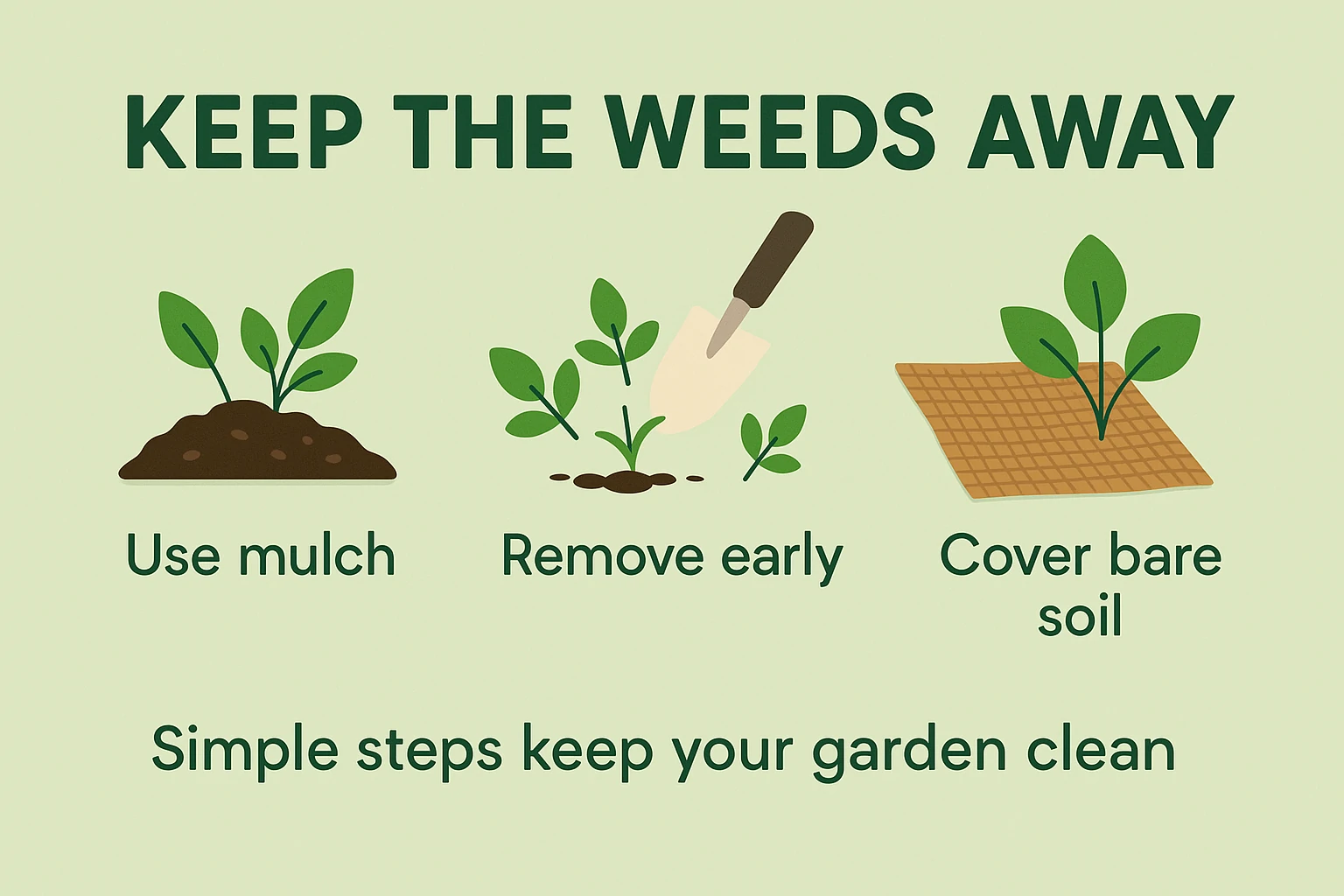
Weeds grow fast and steal from your plants. They take water, food, and space. Pull them out as soon as you see them. Do not wait. Young weeds come out easy.
Use your hands or a small tool. Be careful near your plants. Try not to harm their roots. Cover the soil with mulch. This keeps weeds out and helps hold water in.
Check your garden often. A quick look every day can stop a weed problem before it spreads. A clean garden is a strong garden.
Watch Out for Pests
Bugs and insects show up in every yard. Some help, some harm. Look under leaves and near stems. If you see holes or dark spots, a pest may be the cause.
Use simple tricks to keep bugs away. Mix soap and water. Spray it on the leaves. Use garlic or neem oil. These natural tools protect plants without strong chemicals.
Some insects help your garden. Bees, ladybugs, and worms do good work. They pollinate flowers and keep soil rich. Let them stay. Balance is key. Not all bugs are bad.
Feed Your Garden When It Needs It
Plants need food. Use fertilizer or compost. Follow the label. Use the right amount. Too much can burn the plant and spoil the soil.
Feed your plants during their growing season. Once every few weeks is enough. Some plants need less. A good rule is to watch how they grow. If leaves turn pale or growth slows, it may be time to feed.
Compost tea is a gentle option. Fill a bucket with water. Add a small amount of compost. Let it sit for one day. Pour the liquid near the base of your plants. This gives a soft boost.
Try these garage door decor ideas. They make your home look fresh from the outside.
Trim and Prune to Help Growth
Cutting plants may seem odd, but it helps. Remove dead leaves, weak stems, and faded flowers. This sends energy to the strong parts.
Use clean, sharp tools. Cut at an angle. Do not tear the plant. Some plants need a trim after flowers fade. Others do best in early spring. Learn what works for each type.
A trimmed plant looks better. It grows stronger. It stays healthy. This step makes a big difference.
Work with the Seasons
Plants grow in cycles. Spring is for new starts. Summer gives fast growth. Fall needs clean-up. Winter brings rest.
Plant the right seeds at the right time. Use spring for flowers and greens. Use fall for bulbs. Use winter to plan and prepare. Some plants grow through cold, like kale or pansies. Others sleep until warm days return.
Keep a garden notebook. Write down what works. Track weather, planting times, and good spots. This helps you do better each year.
Add Beauty and Comfort
A garden is not just for plants. It should feel like part of your home. Add a path with small stones. Place a bench where you can sit. Use lights to make it glow at night.
Add a small fountain or birdbath. Use color in smart ways. Red flowers draw the eye. White ones add peace. Let your garden speak your style.
Use mulch, pots, or wood chips to make it neat. Place tall plants near fences. Grow herbs in baskets near the kitchen. Every detail adds charm.
Conclusion
A garden grows with time, not in a day. Each step you take brings new life to your home. You may see dry soil, bugs, or slow growth at first. Do not give up. Keep working with care and patience.
The goal is not to build something perfect. The goal is to find peace, joy, and green space close to home. A small plant can change how your space feels. A garden gives more than it takes.
Start simple. Choose what fits your space and life. With a few tools and daily care, your garden will grow strong. Homenumental believes every home can grow something good. Take the first step and let nature grow around you. You can also explore other creative ways to refresh your space, like this fun wall graphic idea for moms and kids.
Garden Help: Quick FAQs for Every Beginner
Q. What is the best way to start a garden at home?
Start with a small space. Pick a spot with sun for most of the day. Use simple tools and clean soil. Choose strong plants that grow well in your area. Keep it easy and add more later as you learn.
Q. How much time should I spend in the garden each day?
Ten to fifteen minutes is enough. Use that time to check plants, pull weeds, and water dry soil. A few minutes each day keeps the garden clean and healthy.
Q. Can I grow plants without spending too much?
Gardens do not need big money. Use old boxes, bottles, or crates to plant in. Start with seeds. Make compost from kitchen waste. Ask neighbors or friends for extra seeds or cuttings.
Q. What plants work well in small areas?
Try herbs like mint, basil, or parsley. Small vegetables like cherry tomatoes and lettuce also fit well. Use pots or boxes with holes at the bottom. Place them where they get enough sun.
Q. How can I tell if a plant is in trouble?
Look at the leaves. Yellow color, dry edges, or drooping stems show signs of stress. Check the soil. If it feels too wet or dry, fix the water level. Look under leaves for bugs or black spots.
Q. What keeps a garden strong all year?
Use compost to feed the soil. Pick plants that match the season. Cut away dead parts often. Water early in the day. Keep bugs out with clean tools and simple care. A steady routine helps your garden grow better every month.

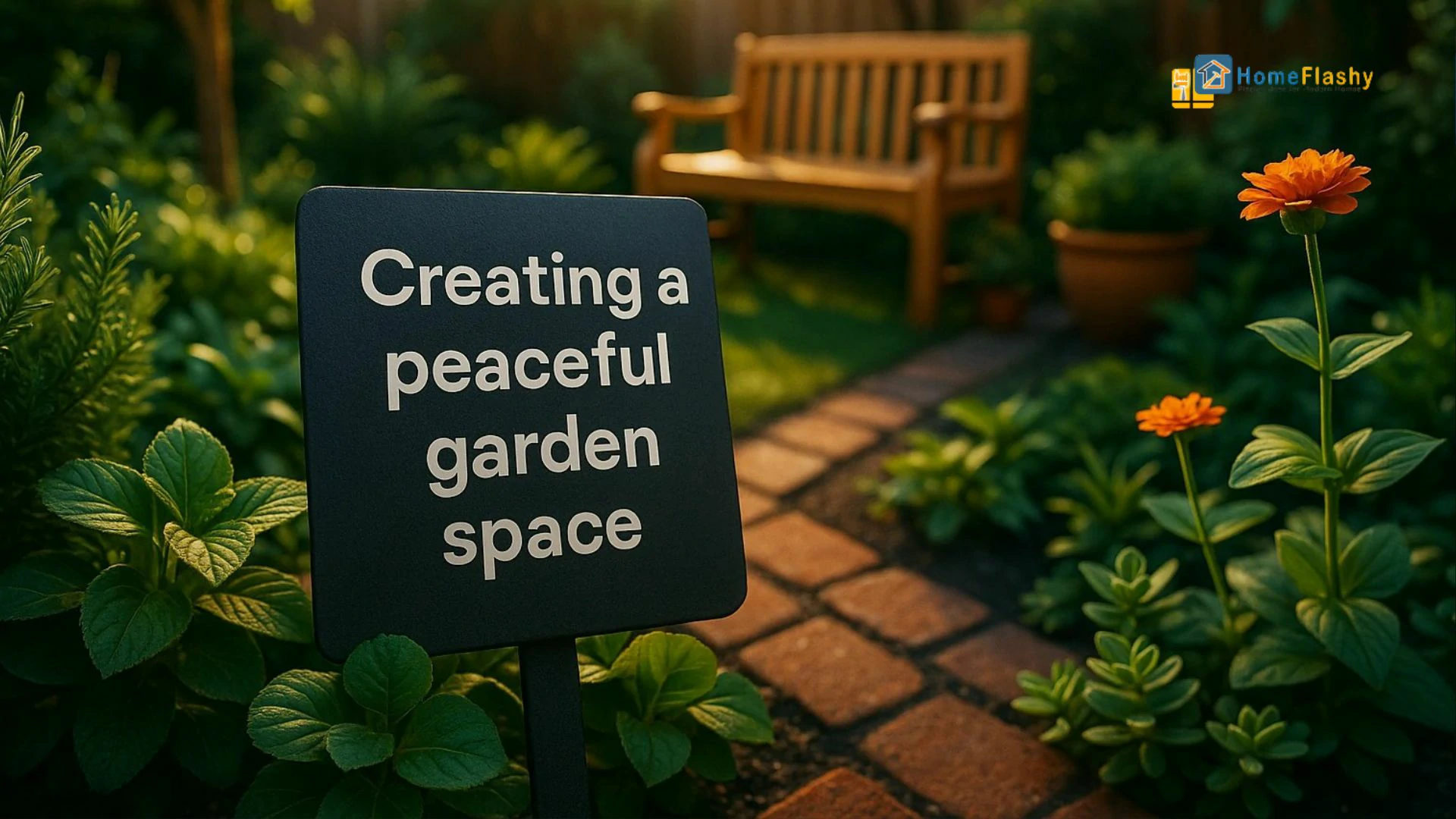
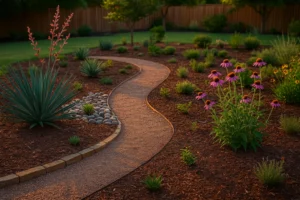

Pingback: Low Maintenance Texas Landscape Ideas You’ll Love